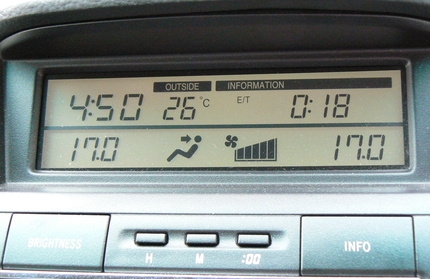
Keep the A/C system in your Dodge Caravan up and running through regular troubleshooting. A trip to the shop can be an expensive proposition, so arriving armed with a few tips can help save you money. Usually, the problems are fairly easy to remedy, whether it be a faulty compressor or a blown fuse. Before taking your Dodge Caravan to a mechanic, there are a few basic troubleshooting steps you can run through on your own.
Turn on the A/C controls (with the motor running) on the vehicle dashboard to test for any switches that may be loose or damaged. Ensure that the A/C is turned on as well as the electric fan.
Start the engine and turn the A/C controls to the highest setting. Listen under the hood for the magnetic clutch attached to the compressor to turn over. You will be able to both hear and see the clutch kick on. The system may be low on refrigerant if the magnetic clutch does not work. There could also be a leak in the compressor itself.
Inspect all the hoses related to the A/C system for kinks or leaks. If you notice oily residue on the hoses, or any A/C component, you may need to have those parts replaced. Ensure that the drive belt is securely connected to the compressor. If the compressor is excessively noisy, it may be time to have it replaced.
Check the fuses. Open the driver's side door and remove the side panel next to the steering wheel to access the fuse box. Look at the instructions on the inside of the fuse panel to locate the fuse corresponding to the A/C system. If the thin metal strip inside the glass fuse is broken, replace it with another of the exact same amperage rating.
Check the pressure in the A/C system. Turn off the engine and attach the air conditioner compression gauge to the system. A normal reading should be between 50 PSI (Pound Per Square Inch) and 80 PSI. If the pressure is lower than this, have a qualified mechanic investigate this further for you. The A/C gauge has color-coded hoses; the blue color-coded hose has a connection that fits on the low-side service port, and the red hose has a connection that fits onto the high-side.
Start the engine and open the hood. Locate the two hoses near the firewall (about the thickness of a garden hose) and check to see if there is a difference in heat. One should be slightly cooler than the other. If they are both hot to the touch, the problem may lie with the valve control. Have a mechanic check this over for you.